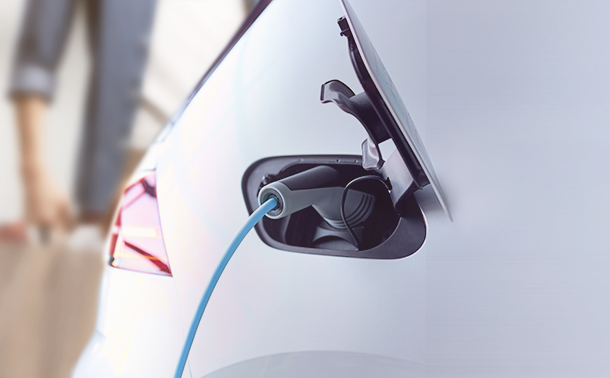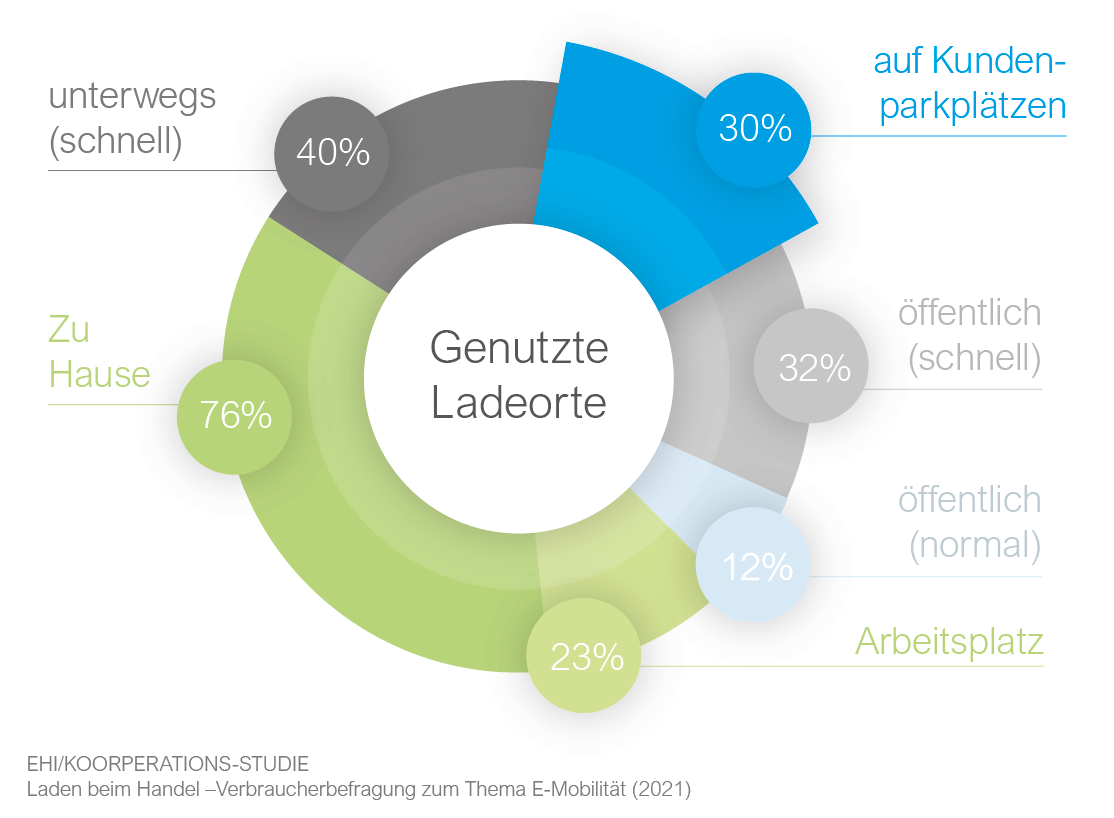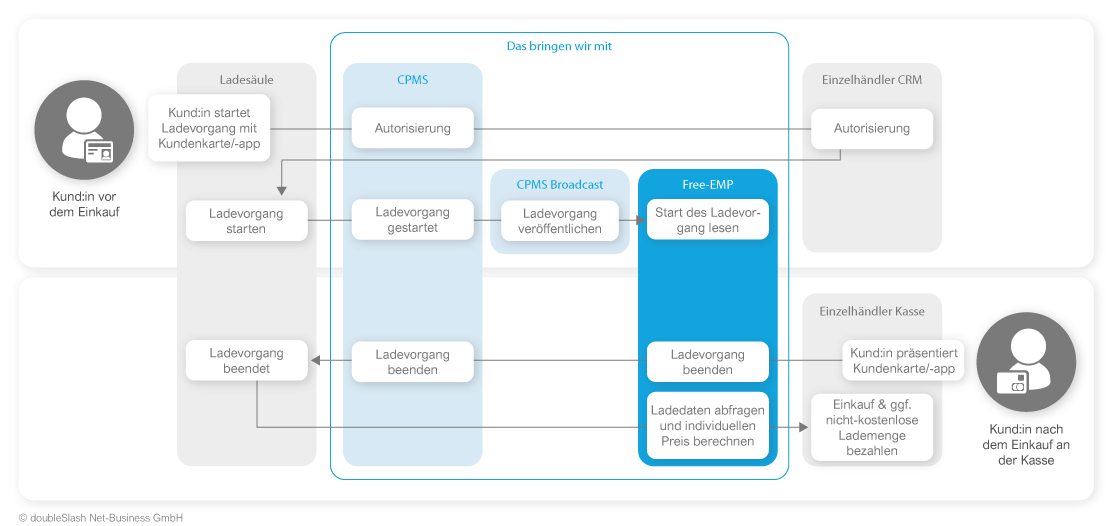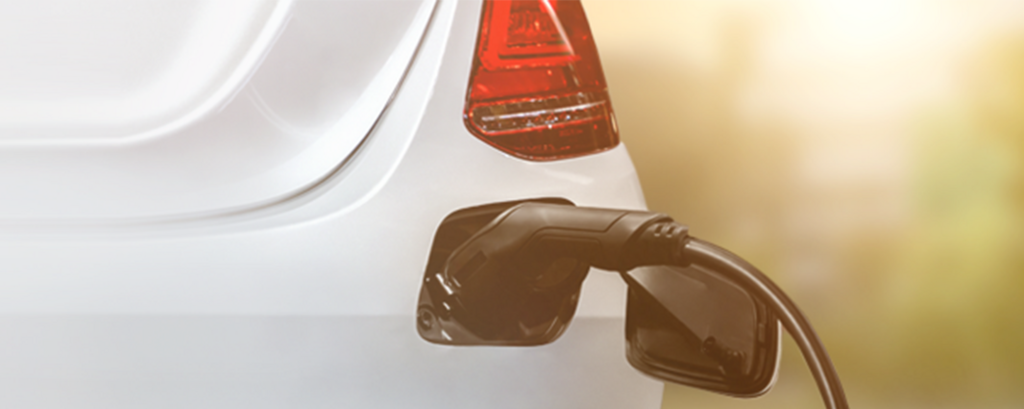
Shop & Charge
eMobility:
More Retail Sales with Shop & Charge
Half of e-car drivers surveyed choose their supermarket based on the availability of charging options
Source: UScale Public Charging Study 2021
The trend The mere provision of charging points is no longer a competitive advantage for retailers.
The challenge You want to create a targeted incentive and added value for your customers without giving away electricity.
Our solution Linking the free charging offer to the customer turnover generated in the store.
59% of respondents to a study on the topic of "charging at retail" stated that the time spent in the store would be extended by a parallel charging process. According to the study, the availability of a free charging station and therefore access to discounted or even free charging is crucial for customers.
Years of experience in the retail sector have shown that the length of stay in the store is directly linked to customer turnover. If you manage to offer your customers a free charging point and motivate them to stay longer in the store, the expected turnover will increase. In addition to the offers at the POS (point of sale), linking the charging offer with shopping behavior (e.g. via the sales generated) can also be effective.
The larger the purchase, the fuller the battery.
Your Opportunity with Shop & Charge: Incentivization Only for Customers
In practice, there are often two scenarios. The challenge: How do retailers create targeted incentives and added value for their customers when parking?
Scenario A
The retailer offers free charging on the premises to create an incentive and competitive advantage. This offer is increasingly used. The existing charging points are often occupied - by people who charge for free but do not shop. The actual customers are faced with a choice: can't charge and still shop? Or shop somewhere else where free charging is possible?
Scenario B
The retailer offers a charging service on its premises for a fee (e.g. billing by kWh). There is no obvious differentiating feature compared to other retailers and no added value or incentive for the retailer's own customers.
According to an analysis by Ernst & Young, around a quarter of all e-car drivers will not (be able to) charge at home or at work by 2030.
Various forecasts assume that there will be around 11 million registered e-cars in Germany by that year. This means that there will be almost 3 million vehicles on the road in Germany that are dependent on (semi-) public charging. For them, "parked charging" will play an important role. This involves using the time the car is stationary or parked for charging. One of the many possibilities of parking charging is charging while shopping or doing other errands.
As early as 2021, 30% of customer parking spaces were used for charging vehicles. With increasing supply, availability & reliability of potentially free charging options, the share will continue to increase. So if the supply and availability can be ensured or increased, many of the e-car drivers will be happy to shop there. By linking the charging volume to the turnover generated in the store, charging snoring can be avoided and customers are rewarded for their local consumption at the same time. And, of course, the charging stations can also be made accessible to the public and thus supplement the range of public charging stations outside of opening hours.
doubleSlash is Your eMobility Shop & Charge Expert
- The established doubleSlash reference model for eMobility.
- Best practices from over 10 years of project experience in the eMobility environment.
- Experience from the international integration of well over 100 CPOs.
- Large and tried-and-tested partner network in the eMobility ecosystem.
Together We Will Find the Right Model for Your Use Case




